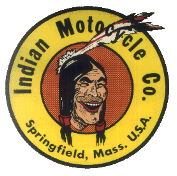Hello Maciek Cizynski,
Sorry you did not get an answer to your question.
The basics are simple and are these:
You must keep a certain level of oil in the crackcase sump for the spinning flywheel to spread around in a "fog" of oil which will lubricate the cylinder walls during periods they are exposed when the pistons rise. Oil passing the rings when a piston descends and creates pressure in the crankcase will be forced into the combustion area and what little is not burned will drain down and lubricate the valve guides. 101's did not have oil sealing rings to allow some oil to pass to do this lubrication. The downside of this is there will be eventually an accumulation of burned oil that will need to be removed or particles of it could hold open a valve. To remove these hard, black "coke" deposits you will need to remove the heads and carefull scrape the coke away.
There are two holes on the lower side of the crankcase which have threaded plugs. The upper hole sets the required oil level for the lower part of the flywheel to run in. Initially or when needed, use the hand pump to fill the crankcase until an excess of oil comes out that topmost hole. Check this oil level frequently by opening the hole to see if excess oil comes out or, if no oil comes out, indicates you need to pump in oil into the crankase until oil does come out.
You will need to try to get the automatic oiler ("oil pump") adjusted to maintain oil in the sump to replace what is lost through (1) case joint leaks, (2) crankcase "breathing" pressure and (3) oil passing the rings. During the oiler adjustment period you may need to stop during riding and check the oil level at the topmost hole as often as every 5 miles at first, going longer distances as you get the pump closer to matching oil consumption.
The oiler on my 101's are well set but still whenever I am done riding for a day I open that top hole to be sure there is enough oil there for the next ride, draining out any excess or pumping in what is needed.
It is not really possible to sense if the cranckase oil level is too low to lubricate the engine unless your legs are very sensitive to an increase in heat. When the engine seems unable to maintain RPM's you are one or a few minutes from the engine stalling from lack of lubrication - I happen to know this.
It is easy to know if the automatic oiler is sending too much oil into the crankcase - you will see an abnormal amount of smoke coming out the crankcase breather tube and out the exhaust and you will certainly sense the engine is working hard against an increase in crankcase pressure.
The hand pump works best if you close the valve at the pump when drawing up oil and opening the valve when you push the pump's plunger down, sending oil into the crackcase, repeating this procedure. Slow strokes are ususally needed to avoid so much pressure in the pump that it is forced out around the plunger shaft and onto the top of your fuel tank.
Use the bottom hole of the crankcase to periodically drain out old oil and sediment, then fully refill with fresh oil using the hand pump unti it starts to come out the top hole.
The sealed primary case (which shares oil with the gear box) also has an oil level check hole you should check often. On some 101's with wear, oil can leak past a seal at the crankshaft and into the sealed primary, raising the oil level too high in the primary. I check this after several daily rides.
I use all kinds of oils in my 101's depending on my whim at the time: single viscosities of 40 or 50, multigrade viscosities topping out at 40 or 50, petroleum based oils, synthetic oils. Its my opinion the differences do not matter, unless you often ride in very cold weather where a lower viscosity oil or a low multigrade provides startup lubrication intil the engine heats the oil.
I use any of these in the primary and gear box too, but mostly I have been using automatic transmission fluid (ATF) type F1. For a while I was using B&M Trick Shift ATF I I had a case of 12 liters) because it is very transparent and a ligh blue color and allowed me to detect any engine oil getting past the crankshaft seal and into the primary - which is an occasional problem with one of my 101's.
I just typed this quickly and I hope there are no errors; if ther are, others will correct them I hope.
I replaced the simple threaded plugs for the topmost hole in my 101's with needle valves for faster opening and closing with no tools needed to check the oil level here and spare the threads in the aluminum case from wear or damage.
Bob


